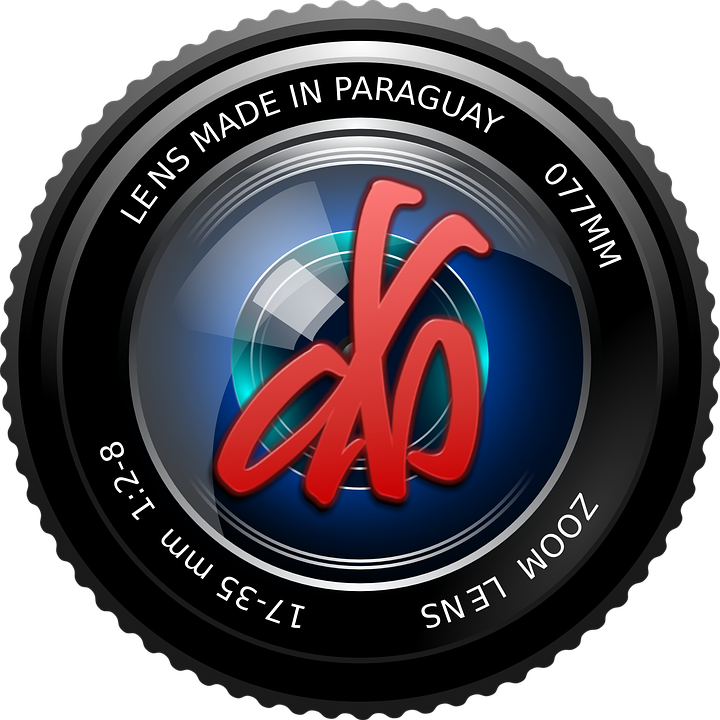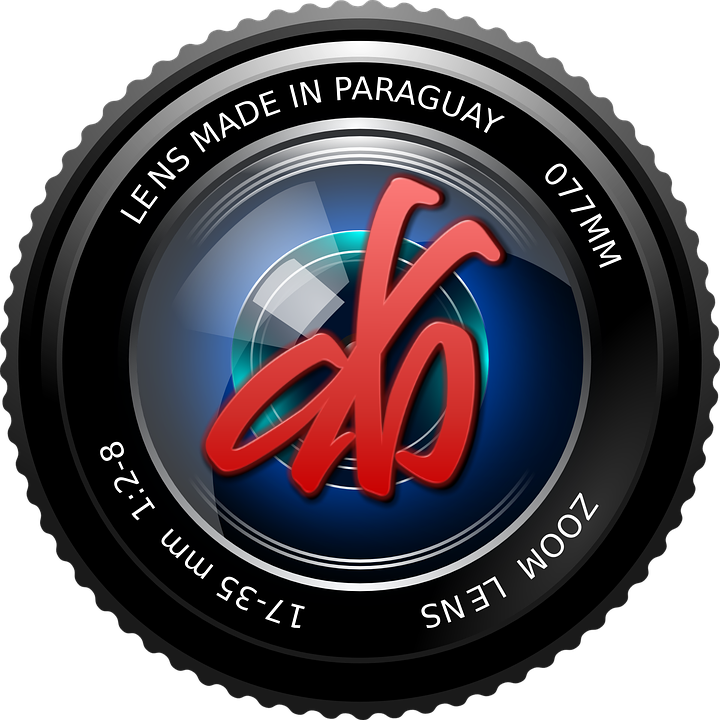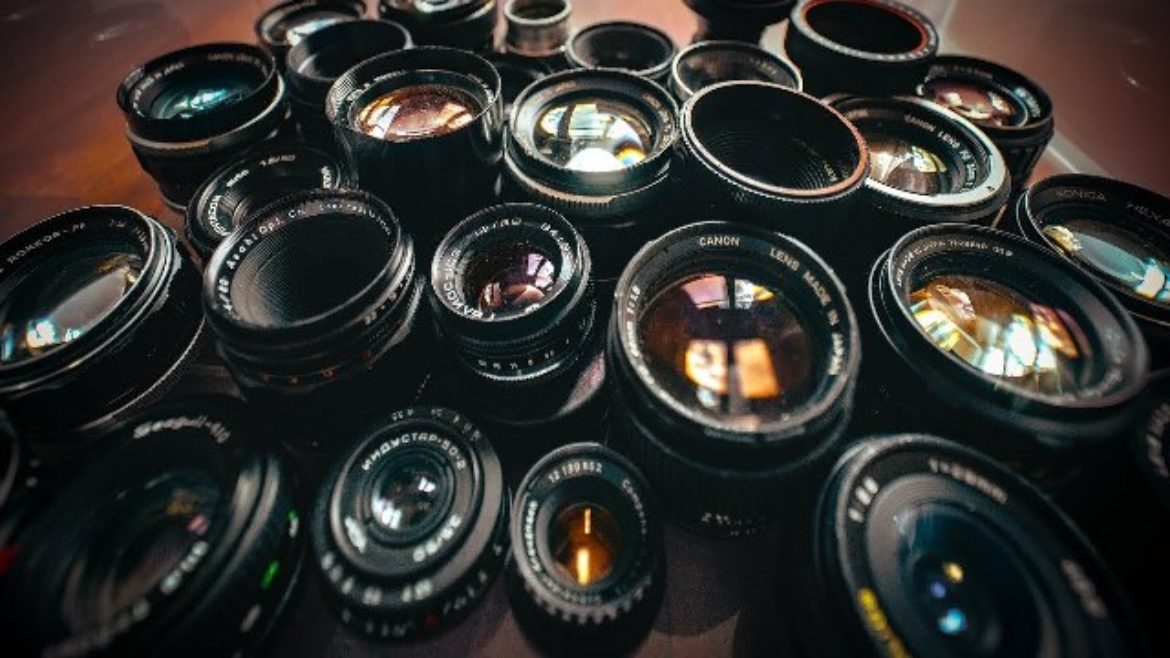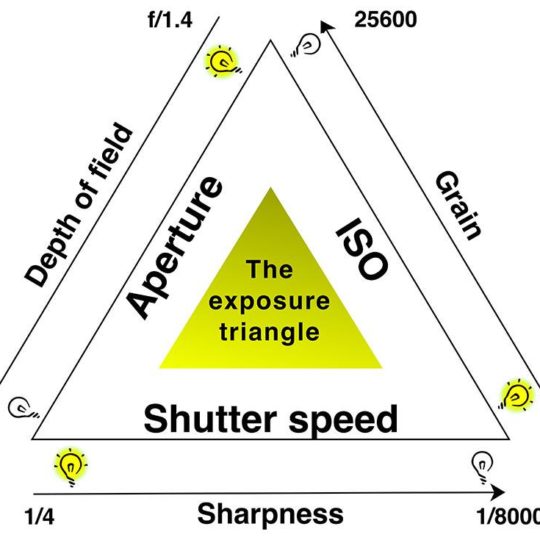A Camera Lens known as photographic lens is an optical lens or assembly of lenses used in conjunction with a camera body or mechanism to make image of objects either on photographic film or other media capable of storing an image chemically or electronically.
There is a major difference in principle of lens used, in terms of detailed design & construction, between still camera, video camera, telescope, microscope or any other apparatus. A lens might be permanently fixed to a camera or it might be interchangeable with the lenses of different focal length, aperture and other properties.
Theory of operation:
- A pinhole of ‘Pinhole Camera’ – the light rays from an object pass through a small hole to form an image
- With a large pinhole, the image spot is large, resulting in a blurry image
- With a small pinhole, light is reduced, but diffraction prevents the image sport from getting arbitrarily small
- With a simple lens, much more light can be brought into sharp focus
The lens usually is focused by adjusting the distance from the lens assembly to the image plane, or by moving elements of the lens assembly. To improve performance, some lenses have a cam system that adjusts the distance between the groups, as the lens is focused
Construction of lens:
Glass is the most common material used to construct lens elements, due to its good optical properties and resistance to scratching. Other materials are also used, such as quartz glass, fluorite, plastics like acrylic (Plexiglass) and even germanium and meteoritic glass
Today, most lenses are multi-coated in order to minimize lens flare and other unwanted effects. Some lenses have a UV coating to keep out the ultraviolet light that could taint color
Most modern optical cements for bonding glass elements also block UV light, negating the need for a UV filter. UV photographers must go to great lengths to find lenses with no cement or coatings
Aperture & Focal Length :
The two fundamental parameters of an optical lens are the focal length and the maximum aperture. The lens’ focal length determines the magnification of the image projected onto the image plane, the aperture and the light intensity of that image. For a given photographic system the focal length determines the angle of view; short focal lengths give a wider field of view than longer focal length lenses. A wider aperture, identified by a smaller f-number, allows using a faster shutter speed for the same exposure.
The maximum usable aperture of a lens is specified as the focal ratio or f-number, defined as the lens’s focal length divided by the effective aperture, a dimensionless number. The lower the f-number, the higher light intensity at the focal plane. Larger apertures (smaller f-numbers) provide a much shallower depth of field than smaller apertures, other conditions being equal. Practical lens assemblies may also contain mechanisms to deal with measuring light, secondary apertures for flare reduction and mechanisms to hold the aperture open until the instant of exposure to allow SLR cameras to focus with a brighter image with shallower depth of field, theoretically allowing better focus accuracy
Types of Lenses:
Focal lengths are usually specified in millimetres (mm), but older lenses might be marked in centimetres (cm) or inches. For a given film or sensor size, specified by the length of the diagonal, a lens may be classified as a:
- Standard/Normal Lens – General purpose Photography
- Zoom Lens – Portraits/Wedding/Street/Documentry Photography
- Macro/Close Up lens – Close up/Ultra detailed/Product Photography
- Wide Angle Lens – Interiors/ Architecture/ Landscape/ Forest Photography
- Short Tele photo– Portraits/Candid Photography
- Medium Telephoto – Close Sports/ Action Photography
- Super Telephoto – Far Sports /Wildlife /Nature /Astronomy Photography
- Fish Eye Zoom Lens – Wide Panoramas/Skyscapes/Artistic/ Cityscapes/Landscape/Real Estate/Absttract Photography
- Tilt & Shift Lens – Creative & Perspective control especially for Architecture/ Miniatures/ Landscape Photography – Saves lot of post procesing time
Focal Length:
The focal length of the lens (as mentioned above) is the distance between the lens and the image sensor when the subject is in focus, usually stated in millimeters (e.g., 28 mm, 50 mm, or 100 mm. The Focal Length of different lenses is as under:
- The fish eye (Ultra Wide) the focal lenth is 8-24 mm
- The wide angle focal length is 14mm, 20mm, 21mm, 24mm, 28mm & 35 mm
- Standard Prime the focal length is 30, 50, 85, 135, 200 mm
- Zoom the focal length is 17-40 mm, 24-105, 55-200 mm, 70-200mm
- Macro the focal length is 50-200mm
- Telephoto the focal length is 100-600 mm
Filter Thread:
When you buy a lens, it’s always a good idea to pick up a UV filter to protect the front. You may also want a polarising filter or a neutral density filter . You’ll notice that these filters come in different sizes, and the filter thread size on the lens, measured in millimetres, tells you the size of filter
Image Stablization:
Image stabilisation technologies exist to help you get shots at lower shutter speeds than that, and they are usually rated in terms of how many extra “stops” they give you to play with. A “stop” is photography dialog for a halving, or doubling, of the light. So if you went from 1/100th of a second to 1/50th of a second shutter speed and didn’t change anything else, that would be 1 stop.
Modern image stabilisation technologies offer between 3 and 5 stops of stabilisation. To put that in practical terms, if you are shooting with a 200mm lens at 1/200th of a second, 3 stops would let you hand hold down to 1/25th of a second. 5 stops would let you hand hold and still get sharp images as slow as 1/6th of a second!
As you can see, image stabilisation can make a huge difference, and it is definitely worth thinking about when looking for a lens. Of course, as with everything, there are tradeoffs, and an image stabilized lens will often be more expensive and slightly heavier than an equivalent non-stabilized version.
Weight & Size:
Weight is a key consideration when it comes to picking a travel lens, as the idea is that you’re going to be using the lens for travelling
Apart from weight, the size of the camera lens is also important. Portability can be an important factor for a travel photography, particularly if you’re travelling and prefer to pack carry-on only.
Please buy and select your choice of camera lens based on your photography requirment, cost, weight & size of lens
Go ahead experiment & enjoy the photography…






Recent Comments